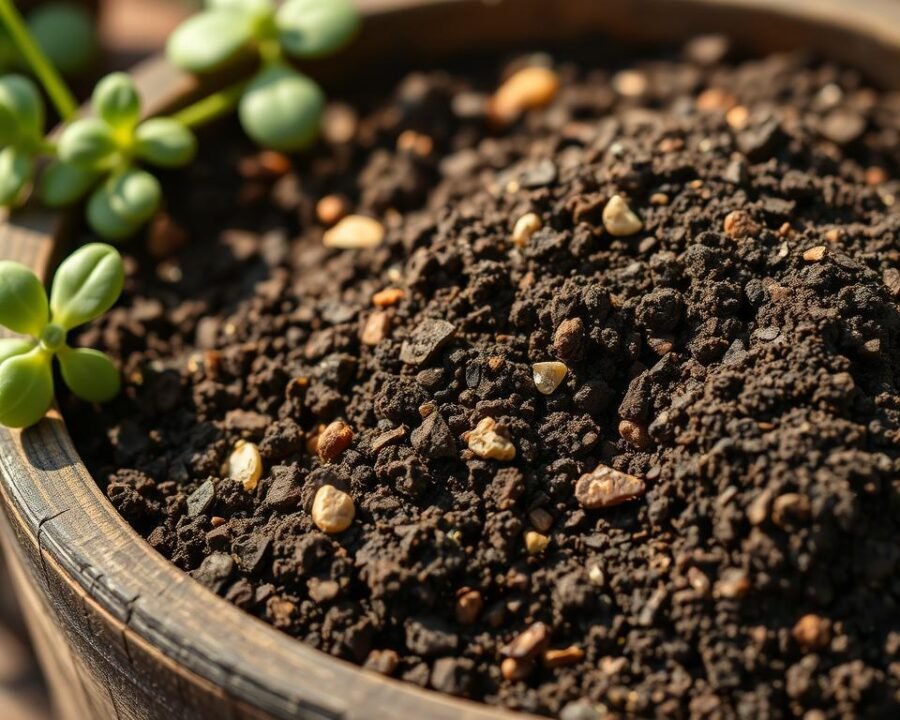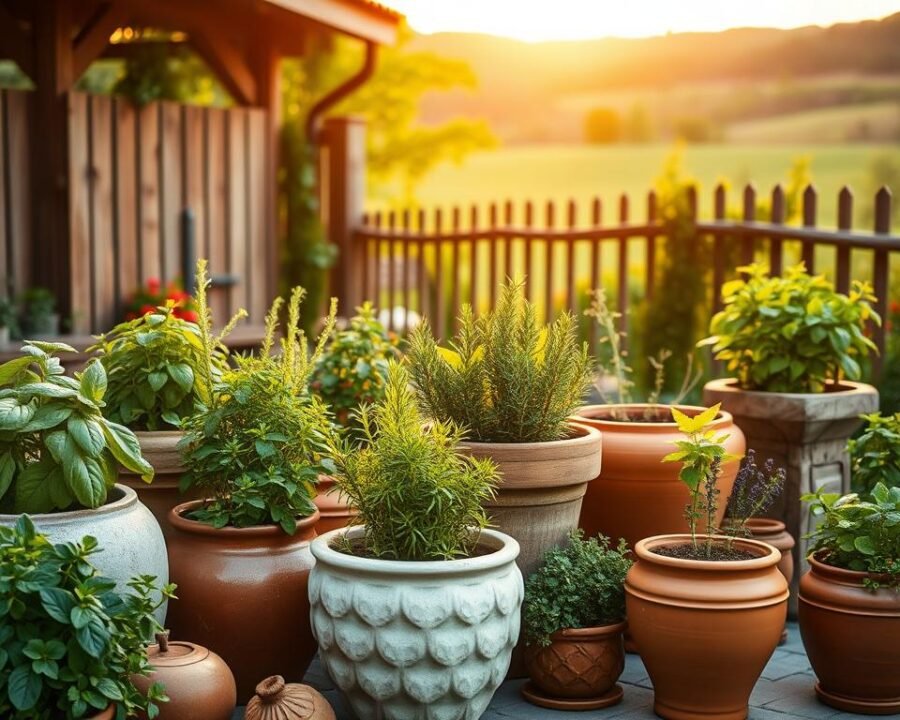We Love These Best Outdoor Herb Garden Planters You Need to Try
There’s something magical about stepping outside and snipping fresh herbs for a meal. The aroma of basil, the sharpness of rosemary, or the cool freshness of mint can transform any dish. Whether you have a sprawling backyard or just a tiny balcony, growing your own flavorful greens is easier than you think.
For urban dwellers or beginners, container gardening offers a simple way to cultivate herbs. The EarthBox Junior Gardening System is a standout choice, especially for tight spaces. With smart designs like self-watering features and durable materials, these planters make it effortless to enjoy homegrown flavors year-round.
Imagine plucking fresh herbs whenever inspiration strikes. No more wilted supermarket bundles—just vibrant, fragrant leaves at your fingertips. Let’s explore how the right setup can turn any corner into a thriving little oasis.
Key Takeaways
- Fresh herbs elevate meals with unmatched flavor and aroma.
- Container gardening works well in small or urban spaces.
- The EarthBox Junior is ideal for compact herb cultivation.
- Self-watering systems simplify maintenance.
- Durable materials ensure long-lasting use.
Why Grow Herbs in Outdoor Planters?
Urban spaces can still flourish with aromatic greens thanks to smart container solutions. Whether you’re seasoning a dish or garnishing a cocktail, having fresh herbs steps away is a game-changer. Let’s explore how planters make this possible.
Convenience and Accessibility
Balcony or patio planters keep thyme, parsley, and basil within arm’s reach. No more last-minute grocery runs—just snip what you need. Studies show 80% of urban growers use containers for their herbs, proving their practicality.
Space Efficiency for Urban Gardeners
Vertical planters save space compared to traditional beds. Compact options like the EarthBox Junior fit snugly on railings or windowsills. Plus, they cut water needs by 50%, making them ideal for busy lifestyles.
Control Over Growing Conditions
Containers let you manage soil pH and nutrients precisely. Opt for organic starter plants from trusted sources like Baker Creek. Avoid big-box store herbs treated with synthetic fertilizers—they can harm long-term growth.
- Quick access for cooking and garnishing.
- Space-saving designs for small areas.
- Customizable soil and light conditions.
Choosing the Best Outdoor Herb Garden Planters You Need to Try
Fresh flavors start with the right foundation—choosing containers that suit your herbs. Materials, size, and features like self-watering systems impact growth and ease. Let’s break down the essentials.

Material Options: Terra Cotta, Wood, Plastic, and More
Each material offers unique benefits. Terra cotta breathes well, preventing soggy soil, but dries quickly. Ceramic retains moisture, while galvanized steel resists rust and suits modern aesthetics.
Wooden containers blend naturally but need liners to avoid rot. Plastic is lightweight and affordable, though less durable. For longevity, food-grade stainless steel (like in EarthBox) resists corrosion.
Sizing Guidelines for Different Herbs
Match pot depth to root needs. Chives thrive in 6–8″ pots, while rosemary demands 12″ containers. Sage and oregano also need deeper space to spread.
- Compact herbs (basil, thyme): 8–10″ pots.
- Sprawling herbs (mint): Solo planters to curb invasion.
Self-Watering Planters for Low-Maintenance Care
Busy schedules? Self-watering systems like EarthBox Junior regulate water, preventing over- or under-watering. A reservoir feeds roots as needed, ideal for forgetful gardeners.
These containers also reduce fungal risks by keeping foliage dry. Pair them with moisture-loving herbs like parsley for fuss-free growth.
The Importance of Proper Drainage
Healthy roots start with smart water management. Without proper drainage, even the most vibrant herbs can quickly succumb to root rot or fungal diseases. Let’s explore how to keep your container setup thriving.

Why Drainage Holes Are Non-Negotiable
Excess water drowns roots by cutting off oxygen. Mediterranean varieties like rosemary and lavender demand fast-drying conditions. Studies show that oregano and thyme planted in waterlogged soil yield 40% less foliage.
For optimal results, choose pots with pre-drilled holes. Terra cotta’s porous nature naturally wicks away moisture, while plastic containers benefit from added aeration.
Solutions for Planters Without Drainage
No holes? No problem. Here’s how to retrofit decorative pots:
- Layer gravel: Add 1-2 inches at the base before soil to create a runoff buffer.
- Drill smartly: Use a 1/4″ bit to make holes every 6 inches along the bottom edge.
- Elevate pots: Place them on stands or bricks to improve airflow.
Herbs That Thrive in Well-Drained Soil
Some varieties flourish in drier conditions. For these, mix 30% perlite into potting medium:
| Herb | Container Depth | Special Mix |
|---|---|---|
| Lavender | 10-12″ | 30% perlite |
| Sage | 8-10″ | 20% sand |
| Thyme | 6-8″ | Standard mix |
For hassle-free growing, consider self-watering systems with built-in reservoirs. They deliver moisture without waterlogging risks.
Selecting the Right Soil for Your Herb Planters
Not all dirt is created equal, especially when it comes to growing herbs in containers. While garden beds thrive with native soil, potted plants need tailored mixes to avoid compaction and poor drainage.

Why Garden Soil Doesn’t Work for Containers
Backyard dirt becomes dense in pots, suffocating roots. Unlike fluffy FoxFarm potting mix, garden soil lacks perlite for aeration. EarthBox’s dolomite lime additive also balances acidity—something plain dirt can’t do.
Key Features of Quality Potting Mix
Look for these ingredients:
- Perlite/vermiculite: Creates air pockets for root health
- Organic matter: Compost feeds nutrients slowly
- pH buffers: Maintains 6.0-7.0 range for most herbs
pH Balance and Nutrient Needs for Herbs
Basil craves nitrogen-rich blends, while rosemary prefers lean soil. Avoid synthetic fertilizers from big-box stores—they harm microbial life. For tailored varieties, Southern Exposure Seed Exchange offers herb seeds matched to specific soil types.
Pro tip: Test pH balance yearly. A simple kit ensures your mint or thyme absorbs nutrients efficiently.
Sunlight Requirements for Thriving Herb Gardens
Sunlight fuels the vibrant flavors of homegrown herbs, making placement crucial. Whether on a balcony or backyard, understanding light needs ensures robust growth. Let’s explore how to match plants with their ideal conditions.
Full Sun Champions: Basil, Rosemary, and Thyme
Mediterranean herbs like basil demand 6+ hours of direct sunlight daily. Less light leads to leggy stems and muted flavors. Rosemary develops woody, aromatic stems under full sun, while thyme carpets its space with tiny leaves.
Partial Sun Favorites: Mint, Parsley, and Cilantro
These varieties thrive with 4–6 hours of indirect light. Mint spreads rapidly in dappled shade, and cilantro bolts less in cooler spots. Test High Mowing seeds in shaded vs. sunny areas—growth rates differ sharply.
Adapting to Seasonal Shifts
Summer’s intense rays may scorch delicate leaves. Use mobile planters to chase softer light angles. In winter, LED grow lights supplement scarce sunshine. Track patterns with a sunlight map for optimal placement year-round.
| Herb | Light Needs | Seasonal Tip |
|---|---|---|
| Basil | 6+ hours direct | Rotate pots weekly |
| Mint | 4–6 hours indirect | Shade in peak summer |
| Rosemary | Full sun | Prune for bushiness |
Pro tip: Group herbs by light needs to simplify care. Gardeners save time and boost yields with smart zoning.
Watering Your Herb Planters the Right Way
Balancing moisture levels is key to keeping herbs vibrant and flavorful. Too much water leads to root rot, while too little causes wilting. Let’s explore how to match irrigation to each plant’s needs.
Moisture-Loving Herbs: Basil, Parsley, and Chives
These varieties thrive in consistently damp soil. Basil perks up with daily summer drinks, while parsley prefers morning hydration. The finger-test method works best—insert a finger up to the second knuckle. If dry, it’s time to water.
Chives demand even moisture but dislike soggy roots. EarthBox’s self-watering system simplifies care by delivering just enough water weekly. Their reservoir prevents messy spills while keeping roots hydrated.
Drought-Tolerant Herbs: Rosemary, Sage, and Oregano
Mediterranean natives prefer dry spells between drinks. Rosemary needs soil to dry completely—wait until leaves slightly droop before watering. Sage thrives with biweekly irrigation, and oregano enjoys neglect.
For these hardy herbs, shallow pots work better than deep containers. Terra cotta aids evaporation, mimicking their native rocky slopes. Overwatering causes yellow leaves faster than drought.
Tips to Avoid Over-Watering and Root Rot
Prevention starts with smart tools and habits:
- Use moisture meters: These $10 gadgets eliminate guesswork by measuring soil dampness at root level.
- Skip decorative pots without saucers: Trays catch excess water, protecting surfaces and roots.
- Morning watering: Allows leaves to dry before cooler evening temps reduce fungal risks.
| Herb | Watering Frequency | Warning Sign |
|---|---|---|
| Basil | Daily in summer | Wilting leaves |
| Rosemary | Every 10-14 days | Yellowing needles |
| Parsley | Every 2-3 days | Browning edges |
Pro tip: Group herbs by water needs to streamline care. This prevents thirsty basil from drowning drought-loving thyme in shared containers.
Companion Planting Tips for Herb Gardeners
Strategic pairings can make or break your herb collection. Some plants thrive together, while others compete aggressively for space and nutrients. Understanding these relationships maximizes yields and minimizes headaches.
Grouping Herbs with Similar Needs
Mediterranean varieties like rosemary, thyme, and oregano share drought tolerance. They flourish in the same container with well-drained soil and full sun. Moisture-loving herbs like basil, cilantro, and parsley also make ideal neighbors.
Consider these winning trios:
- Thyme + rosemary + sage: All prefer dry conditions and minimal watering.
- Basil + chives + parsley: Thrive in consistently moist soil with partial shade.
- Dill + fennel + coriander: Attract beneficial pollinators when grouped.
Herbs That Should Grow Alone
Mint dominates any shared space, spreading through underground runners. Research shows it can overtake neighboring herbs in just three weeks. Lemon balm behaves similarly, making both better suited for solo pots.
“Always isolate aggressive spreaders—their vigor comes at the expense of other plants.”
Popular Herb Pairings for Shared Planters
Large containers like EarthBox allow partitioned planting. Try these combinations:
| Section | Herbs | Benefits |
|---|---|---|
| Left | Oregano + marjoram | Complementary flavors, similar growth |
| Right | Chives + garlic chives | Deter pests naturally |
| Center | Basil + parsley | Shared moisture needs |
For pest control, plant sacrificial herbs like nasturtiums at the edges. They lure aphids away from prized varieties while adding edible flowers to salads.
Conclusion
Growing flavorful greens at home starts with the right setup. Food-grade stainless steel containers, like EarthBox, offer durability and smart design. For beginners, their $34 kit simplifies the journey.
Source organic seeds from trusted suppliers like Baker Creek. Replace store-bought bundles with vibrant fresh herbs from your kitchen doorstep. The aroma of basil or rosemary elevates every dish.
Before planting, double-check:
Drainage holes, sunlight maps, and companion charts. Even a tiny space can host a thriving herb garden. Now, imagine snipping parsley for dinner—straight from your container.







